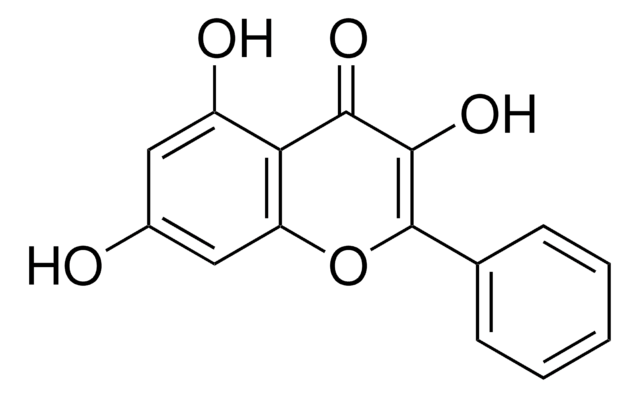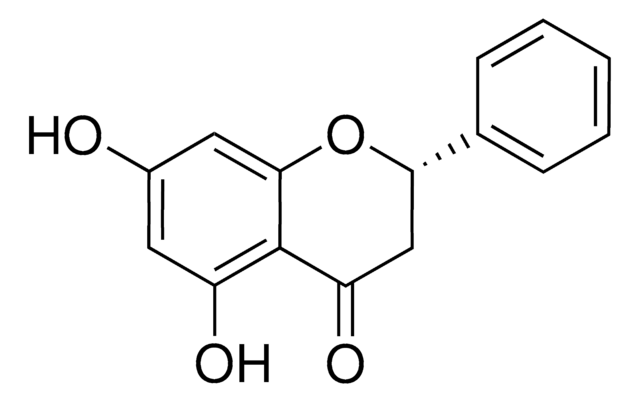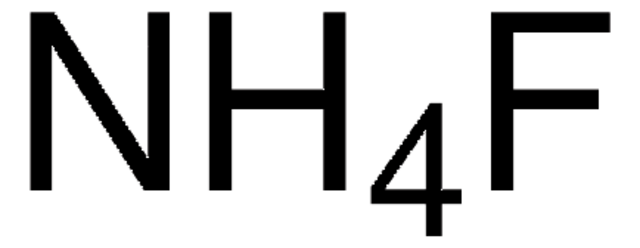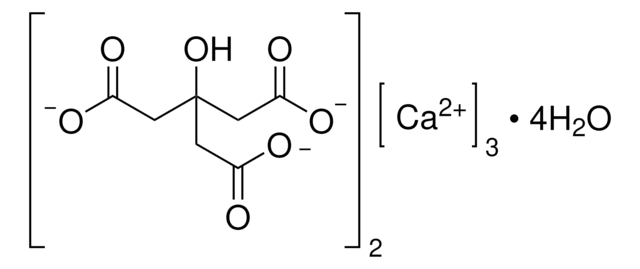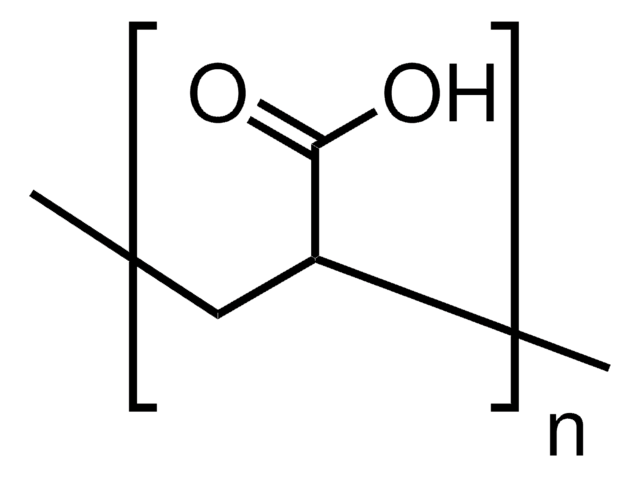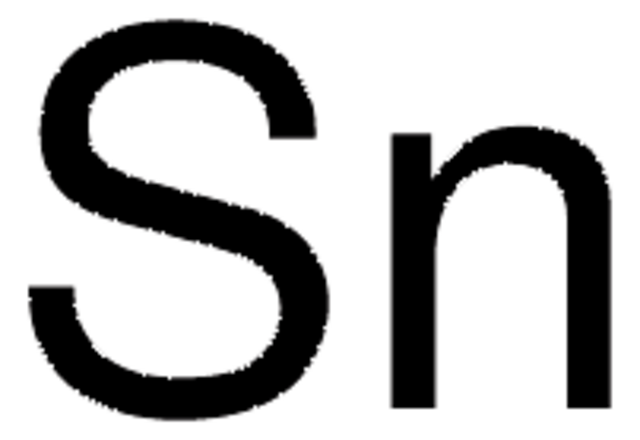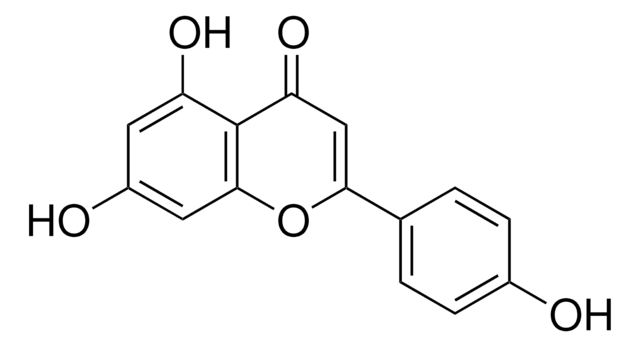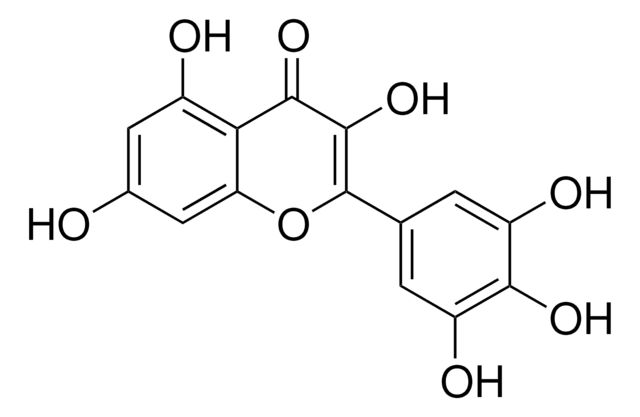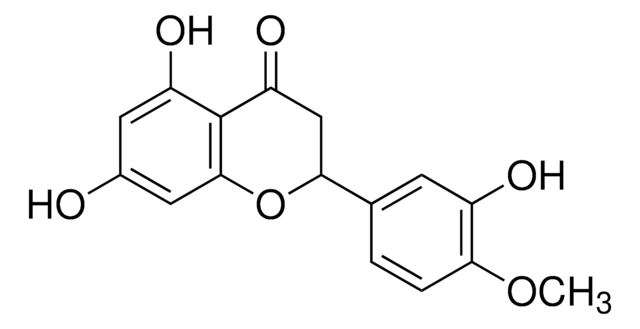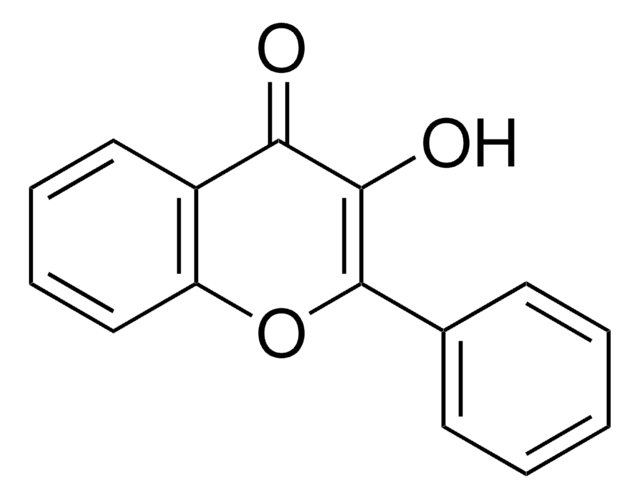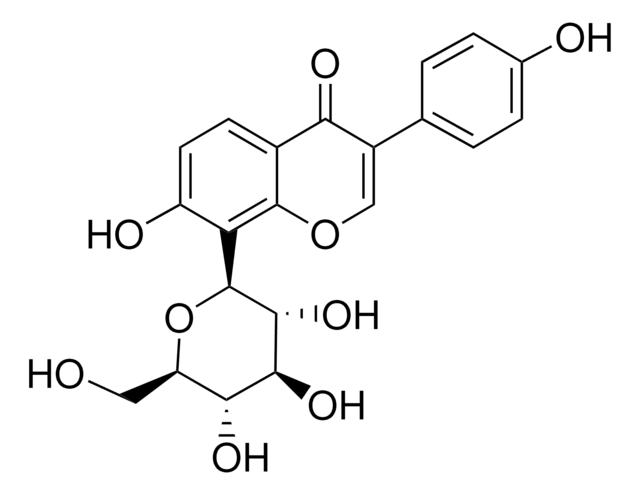282200
Galangin
autophagy inducing flavonoid
Synonym(s):
3,5,7-Trihydroxyflavone, Norizalpinin
About This Item
Recommended Products
Quality Level
Assay
≥95% (HPLC)
form
powder
color
yellow
mp
214-215 °C (lit.)
SMILES string
Oc1cc(O)c2C(=O)C(O)=C(Oc2c1)c3ccccc3
InChI
1S/C15H10O5/c16-9-6-10(17)12-11(7-9)20-15(14(19)13(12)18)8-4-2-1-3-5-8/h1-7,16-17,19H
InChI key
VCCRNZQBSJXYJD-UHFFFAOYSA-N
Gene Information
human ... ADORA2A(135) , ADORA3(140) , CYP1A2(1544)
rat ... Adora1(29290) , Adora2a(25369)
Looking for similar products? Visit Product Comparison Guide
General description
Application
- as a test drug to test its ameliorative effect in a rodent model of cisplatin-induced nephrotoxicity
- to test its effect on the differentiation of 3T3-L1 preadipocyte cells into adipocytes
- as an internal standard in nuclear magnetic resonance spectroscopy and mass spectroscopy
Biochem/physiol Actions
Signal Word
Warning
Hazard Statements
Precautionary Statements
Hazard Classifications
Acute Tox. 4 Oral
Storage Class Code
11 - Combustible Solids
WGK
WGK 3
Flash Point(F)
Not applicable
Flash Point(C)
Not applicable
Personal Protective Equipment
Choose from one of the most recent versions:
Already Own This Product?
Find documentation for the products that you have recently purchased in the Document Library.
Customers Also Viewed
Articles
Antioxidants protect biological systems from oxidative damage produced by oxygen-containing free radicals and from redoxactive transition metal ions such as iron, copper, and cadmium.
Protocols
ASTM D6526: GC Analysis of Impurities in Toluene on SLB®-IL100, 60 m Column
US EPA Method 8260: GC Analysis of Volatiles on SPB®-624 after Purge & Trap using "K" Trap, Fast GC Analysis
Our team of scientists has experience in all areas of research including Life Science, Material Science, Chemical Synthesis, Chromatography, Analytical and many others.
Contact Technical Service